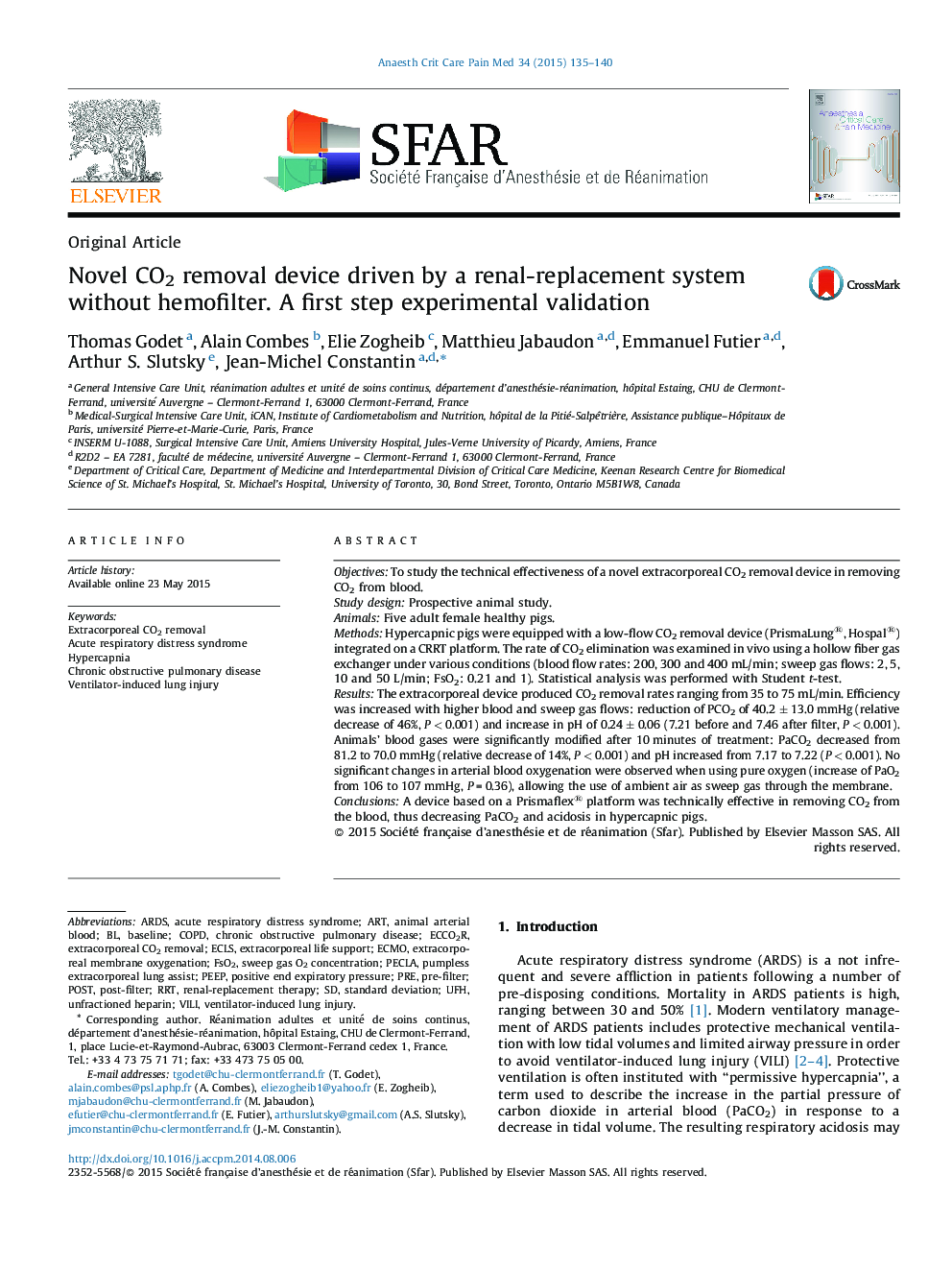| Article ID | Journal | Published Year | Pages | File Type |
|---|---|---|---|---|
| 2741986 | Anaesthesia Critical Care & Pain Medicine | 2015 | 6 Pages |
ObjectivesTo study the technical effectiveness of a novel extracorporeal CO2 removal device in removing CO2 from blood.Study designProspective animal study.AnimalsFive adult female healthy pigs.MethodsHypercapnic pigs were equipped with a low-flow CO2 removal device (PrismaLung®, Hospal®) integrated on a CRRT platform. The rate of CO2 elimination was examined in vivo using a hollow fiber gas exchanger under various conditions (blood flow rates: 200, 300 and 400 mL/min; sweep gas flows: 2, 5, 10 and 50 L/min; FsO2: 0.21 and 1). Statistical analysis was performed with Student t-test.ResultsThe extracorporeal device produced CO2 removal rates ranging from 35 to 75 mL/min. Efficiency was increased with higher blood and sweep gas flows: reduction of PCO2 of 40.2 ± 13.0 mmHg (relative decrease of 46%, P < 0.001) and increase in pH of 0.24 ± 0.06 (7.21 before and 7.46 after filter, P < 0.001). Animals’ blood gases were significantly modified after 10 minutes of treatment: PaCO2 decreased from 81.2 to 70.0 mmHg (relative decrease of 14%, P < 0.001) and pH increased from 7.17 to 7.22 (P < 0.001). No significant changes in arterial blood oxygenation were observed when using pure oxygen (increase of PaO2 from 106 to 107 mmHg, P = 0.36), allowing the use of ambient air as sweep gas through the membrane.ConclusionsA device based on a Prismaflex® platform was technically effective in removing CO2 from the blood, thus decreasing PaCO2 and acidosis in hypercapnic pigs.
